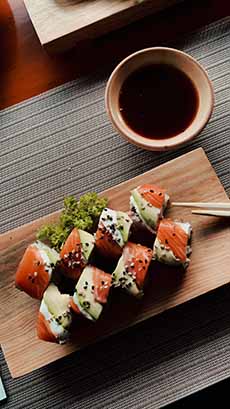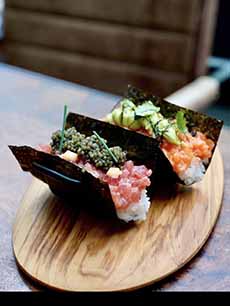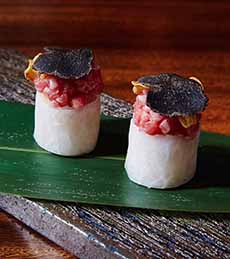International Sushi Day & The History Of Sushi In America
|
What’s for lunch? Why ask, when it’s International Sushi Day (June 18th). Statistics from Bold Data show that the number of sushi restaurants in the U.S. has nearly doubled in the last 10 years—prior to the pandemic. During the pandemic to date, in 2021, along with the country’s mass closing of restaurants, there’s been a decrease of 311 sushi establishments. Hopefully, 311 new ones—and more—will replace them as life heads back to pre-pandemic activity. There are currently 18,944 sushi restaurants in the U.S. We’ve probably been to 100 of them! In 1966, the Kawafuku Restaurant opened in the Little Tokyo neighborhood of Los Angeles (it closed in 2006). Started by an importer named Noritoshi Kanai, chef Shigeo Saito made the sushi and his wife served it. Although sushi had been available in Los Anteles long before then, Kawafuku was the first restaurant in the U.S. dedicated to sushi. According to the Kinja restaurant and sushi bar in Spokane, sushi was being served in the U.S. by the early 1900s, following an influx of Japanese. The first sushi shop in the U.S. reportedly opened in Los Angeles in 1906, in the Little Tokyo neighborhood. A wave of Japanophilia in American high society resulted in the serving of sushi at social functions, even reaching midwestern cities such as Minneapolis, Minnesota, St. Louis, Missouri and Bismarck, North Dakota. The earliest published mention of sushi eaten by an American, in America, is in an August 18, 1904 article in the Los Angeles Herald, noting a luncheon served in Santa Monica by the socialite Fern Dell Higgins. Alas, a wave of anti-Japanese sentiments and restrictions on Japanese immigration began with the Gentlemen’s Agreement of 1907, which restricted Japanese immigration. It put an end to Japanophilia. Alas again, the bombing of Pearl Harbor engendered powerful anti-Japanese sentiment and the closing of Japanese businesses (and much worse: see this article on Japanese internment camps). After World War II, Japanese businesses would not re-emerge until the late 1940s. But back to Kawafuku: It started a movement, with L.A. as the genesis of America’s love of sushi. By the late 1960s, new sushi restaurants were opening up all across L.A.: 50 sushi shops by 1970 and today, 833 of them. By contrast, according to Bold Data, New York has 467 sushi restaurants. It’s not a surprise that Japan is home to the largest number of sushi restaurants: 42,897. The U.S. comes in second with 18,944 sushi shops. And Canada completes the top 3 with 2,529 sushi restaurants. Wherever you hang your hat, find the nearest sushi spot and have a good lunch! |
|
|
|
|
||





